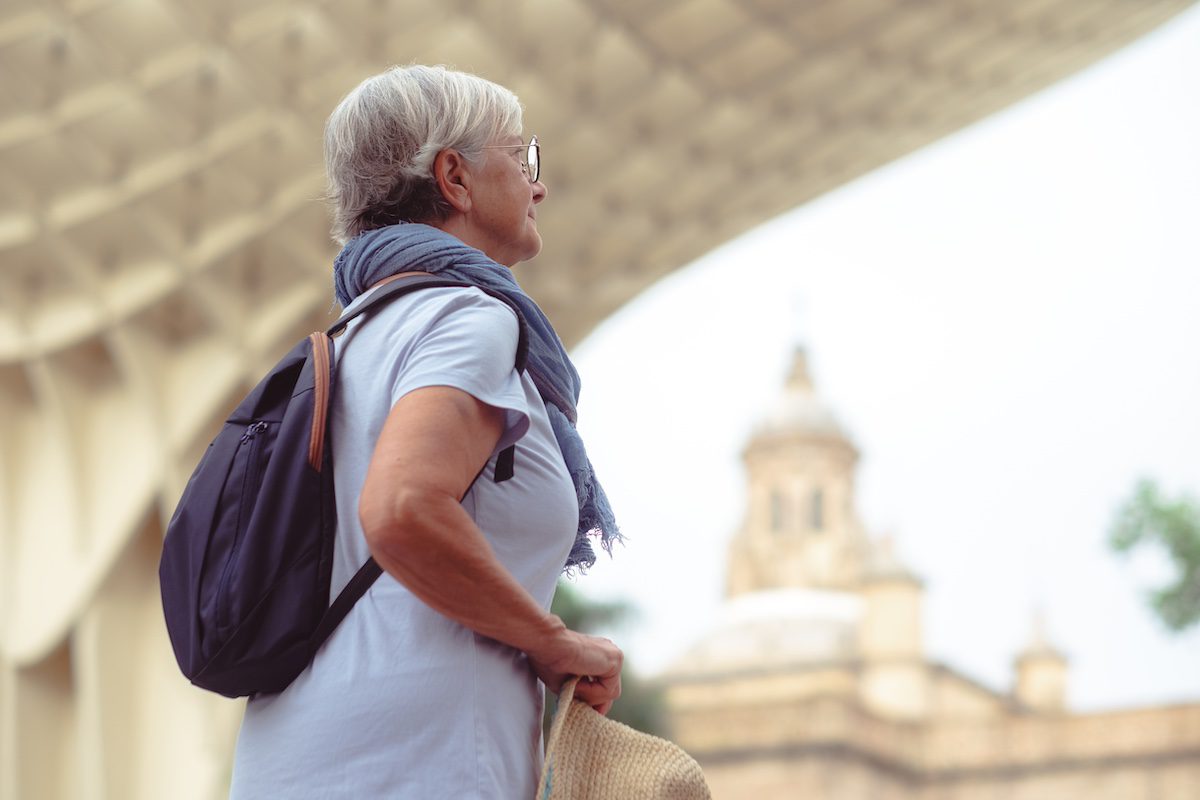Falls are the leading cause of both fatal and nonfatal injuries for people ages 65 and older. One in four older Americans fall every year.
Falls can result in hip fractures, broken bones and head injuries. Even falls without a major injury can cause an older adult to become fearful or depressed, making it difficult for them to stay active.
Helping older loved ones in your life reduce their risk of falling is a great way to keep them healthy and independent as long as possible.
The good news about falls is that most of them can be prevented. Here are some common factors that can lead to a fall:
- Balance and gait: As we age, most of us lose some coordination, flexibility and balance — primarily through inactivity, which makes it easier to fall.
- Vision: In the aging eye, less light reaches the retina. This makes contrasting edges, tripping hazards and obstacles harder to see.
- Medications: Some prescriptions and over-the-counter medications can cause dizziness, dehydration or interactions with each other that can lead to a fall.
- Environment: Most seniors have lived in their homes for a long time and have never thought about simple modifications that might keep it safer as they age.
- Chronic conditions: More than 80 percent of older adults have at least one chronic condition like diabetes, stroke or arthritis. Often these increase the risk of falling because they result in lost function, inactivity, depression, pain or multiple medications.
6 Steps to Reducing Falls
Here are six easy steps you can take today to help your older loved one reduce their risk of a fall:
1. Enlist their support in taking simple steps to stay safe.
Ask your older loved one if they’re concerned about falling. Many older adults recognize that falling is a risk, but they believe it won’t happen to them or they won’t get hurt—even if they’ve already fallen in the past.
If they’re concerned about falling, dizziness or balance, suggest that they discuss it with their health care provider who can assess their risk and suggest programs or services that could help.
2. Discuss their current health conditions.
Find out if your loved one is experiencing any problems with managing their own health. Are they having trouble remembering to take their medications or are they experiencing side effects? Is it getting more difficult for them to do things they used to do easily?
Also make sure they’re taking advantage of all the preventive benefits now offered under Medicare, such as the Annual Wellness visit. Encourage them to speak openly with their health care provider about all of their concerns.
3. Ask about their last eye checkup.
If your loved one wears glasses, make sure they have a current prescription and they’re using the glasses as advised by their eye doctor.
Remember that using tint-changing lenses can be hazardous when going from bright sun into darkened buildings and homes. A simple strategy is to change glasses upon entry or stop until their lenses adjust.
Bifocals also can be problematic on stairs, so it’s important to be cautious. For those already struggling with low vision, consult with a low-vision specialist for ways to make the most of their eyesight.
4. Notice if they’re holding onto walls, furniture or someone else when walking.
These are all signs that it might be time to see a physical therapist. A trained physical therapist can help your loved one improve their balance, strength and gait through exercise. They might also suggest a cane or walker and provide guidance on how to use these aids. Make sure to follow their advice. Poorly fit aids actually can increase the risk of falling.
5. Talk about their medications.
If your older loved one is having a hard time keeping track of medicines or is experiencing side effects, encourage them to discuss their concerns with their doctor and pharmacist. Suggest that they have their medications reviewed each time they get a new prescription.
Also, beware of non-prescription medications that contain sleep aids, including painkillers with “PM” in their names. These can lead to balance issues and dizziness. If your loved one is having sleeping problems, encourage them to talk to their doctor or pharmacist about safer alternatives.
6. Do a walk-through safety assessment of their home.
There are many simple and inexpensive ways to make a home safer. For professional assistance, consult an Occupational Therapist. Here are some examples:
- Lighting: Increase lighting throughout the house, especially at the top and bottom of stairs. Ensure that lighting is readily available when getting up in the middle of the night.
- Stairs: Make sure there are two secure rails on all stairs.
- Bathrooms: Install grab bars in the tub/shower and near the toilet. Make sure they’re installed where your older loved one would actually use them. For even greater safety, consider using a shower chair and hand-held shower.
For more ideas on how to make the home safer, the Centers for Disease Control (CDC) offers a home assessment checklist.



